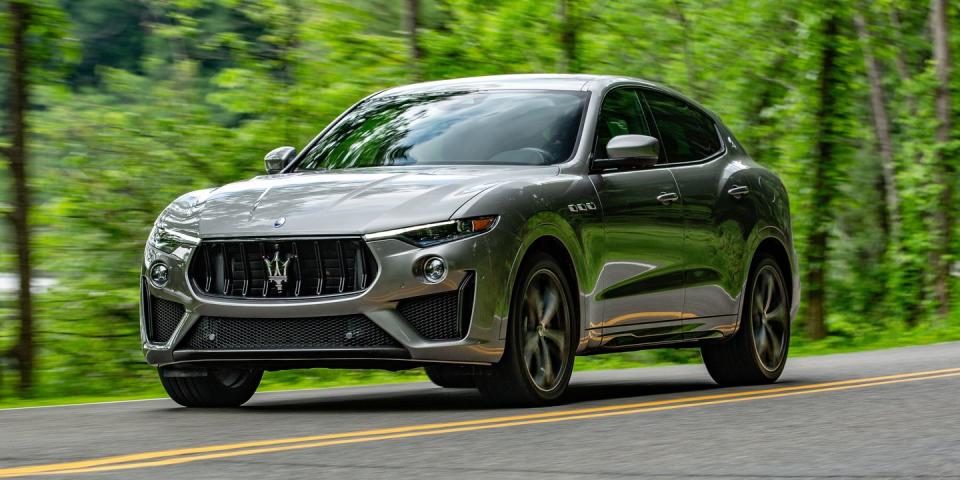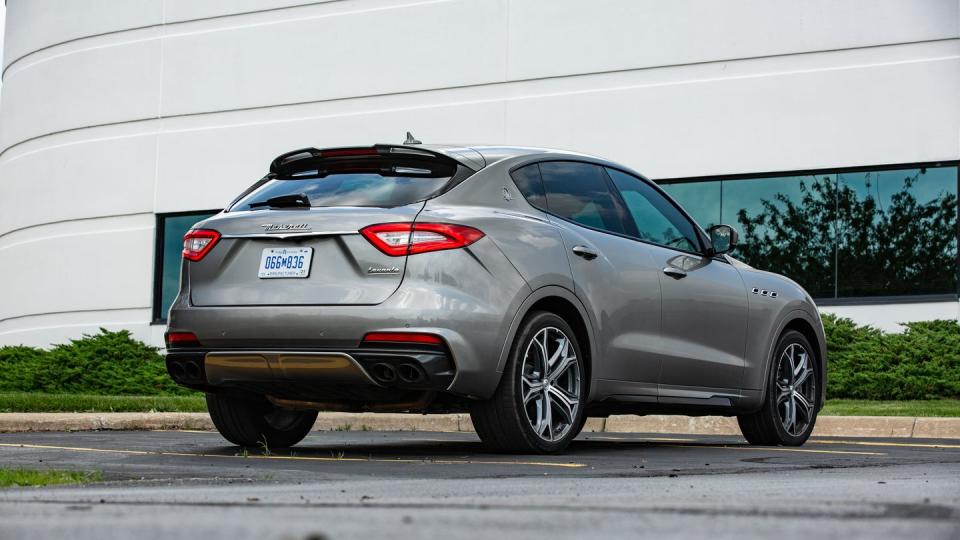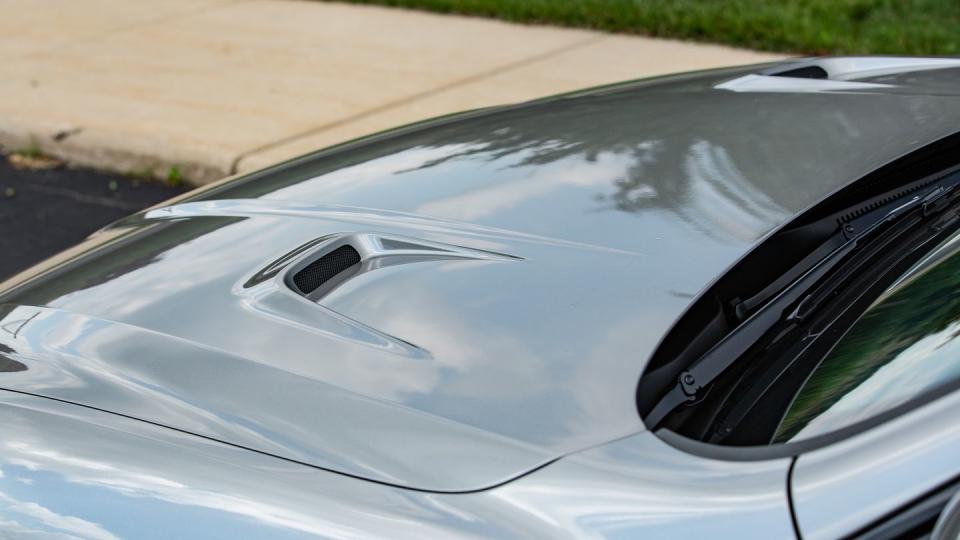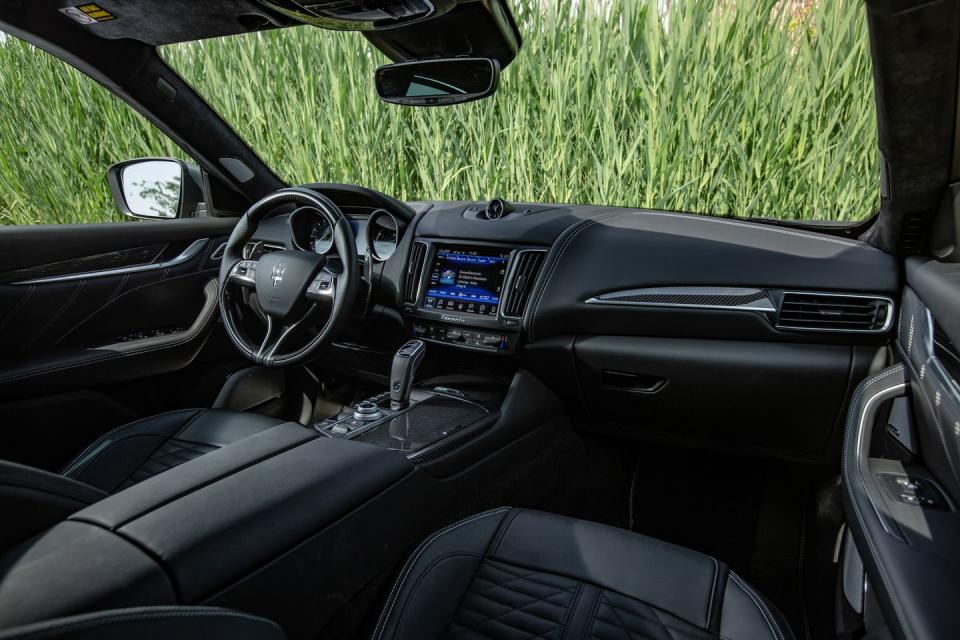2019 Maserati Levante Now Roars the Way It Should

This review has been updated with test results for both the Levante GTS and Levante Trofeo.
In four days at the 2018 Monterey Car Week, only once did we step outside and not hear a flat-crank V-8 idling. Ferraris—and now McLarens—flock to the events surrounding the Pebble Beach Concours d'Elegance and the old-car races at WeatherTech Raceway Laguna Seca (officially and stuffily called the Rolex Monterey Motorsports Reunion) like the salmon of Capistrano. This week on the Monterey Peninsula, Ferrari V-8s are commonplace.
They're so commonplace, in fact, that the population is running out of places to stash them, and you can now find a Ferrari V-8 in the Maserati Levante. (Well, the engine is based on Ferrari architecture and built by Ferrari, but it does not have a flat-plane crank.) In two different output levels, in fact: The Levante GTS is rated at 542 horsepower, and engine-management calibrations spike the Levante Trofeo's number to 582 horses. We were in Monterey not only to ogle irreplaceable Ruxtons and Rollstons, while helicopters landed aboard yachts in Monterey Bay, and to watch a bunch of perhaps underqualified yahoos (and a few who were definitely visibly uncomfortable) fearfully wrestle ferocious vintage Formula 5000 cars through Laguna Seca's Corkscrew, but also to feel out these new Levantes.

Provenance and Promise
Aside from the engines, not much differs between the new V-8 models and the existing V-6s. The GTS wears body color on its lower front splitter and rear bumper trim, while these pieces are rendered in exposed carbon fiber on the Trofeo. The larger inlets in both Levantes' front bumpers are to better feed and cool the bigger powerplants, a change that Fiat Chrysler Automobile's (FCA) head of design, Klaus Busse, swears is functional. "We are living in a world not only of fake news, but a world of fake air intakes, fake outlets, and even fake exhausts," he says. The quad-outlet exhaust system shared by the two cars, then, is also real. And it has loud and quiet modes. Two wheel choices are reserved for the V-8 models. The only other exterior difference between the GTS and Trofeo is that the latter has hood vents, which are small enough to be of suspect function but do lead to real holes that let heat out from under the bonnet, and the word "Trofeo" nested beneath the trident in the Maserati badges on the D-pillar. Pop the hoods, as we're sure many buyers will do before making a purchase decision, and you'll see that the Trofeo has red-painted intake manifolds and valve covers, while the GTS's pieces are the universal color of engine ennui. Which is, who cares?
You'll care about the engine's specs, at least. Similar to the one in the Quattroporte GTS, it's an oversquare 3.8-liter, but its redesigned heads are fitted with new camshafts and valves, and even the pistons and connecting rods are tweaked. The GTS and Trofeo share twin-scroll turbos, but the programming is changed in the Trofeo to carry more boost higher in the rev range, which yields its higher power figure. Both engines produce peak torque of 538 lb-ft at 2500 rpm, routed through the ZF 8HP eight-speed automatic transmission to all four wheels. In normal operation, 100 percent of the torque goes to the rear axle. If necessary, up to half can be routed forward.

It's a big step from the V-6 Levante's and Levante S's 345 and 424 horsepower to the V-8 outputs, and the performance numbers are enhanced commensurately. We managed a 5.1-second zero-to-60-mph time in the Levante S while the GTS dipped below four seconds, turning in a 3.8-second run. The Trofeo shaved that figure down to 3.6 seconds, and managed a quarter-mile in 12.0 seconds flat at 117 mph, a mere 0.1 second and 2 mph quicker. But these are heavy and relatively brick-shaped vehicles, so acceleration does taper as the aerodynamic load piles up above reasonable speeds. And despite the engines' eagerness and power, the Ferrari provenance doesn't count for as much as Maserati might like when it comes to sound. It is not a bad thing that today's market is flooded with twin-turbo V-8s of this approximate displacement that redline around 7000 rpm—unless you're an automaker trying to claim that yours is different. Maserati's engine sounds good but not as special as the expectations set by the Ferrari V-8 descriptor. There is this, though: The Levante GTS is said to be good for 181 mph; the Trofeo, 189. And Maserati engineers managed to tease some high-pitched screams from the mufflers, giving these utes a hint of Italian flair compared to the bawdy bellow of a Mercedes-AMG GLE63 or the anodyne going-fast noise of a BMW X5 M or a Porsche Cayenne.
Life Is a (Pacific Coast) Highway
Suspension changes between V-6 and V-8 models are limited to revised air-spring and damper rates. Both the GTS and the Trofeo have Normal and Sport modes in their suspension settings, the latter of which lowers the body 0.4 inch, but the Trofeo adds a Corsa mode that drops the Levante a full inch more and also enables that launch-control function. There's a hint of wallow when you hustle a V-8 Levante over big road imperfections in Normal mode, but in daily use, body control is otherwise excellent. And that hint of wallow vanishes in Sport mode, while 21- and 22-inch wheels mean that the Corsa setting is useful only on the freshest and smoothest pavement. In any mode, though, steering feel is outstanding, with a tight, immediate wheel. The V-8 Levantes deftly balance comfort with the ability to attack a twisty mountain road. However, these remain substantial SUVs. The GTS we tested tipped the scales at 5163 pounds and could return only a modest 0.84 g of grip around the skidpad on its Continental CrossContact LX Sport all-season tires. The Trofeo, on 21-inch Continental ContiSportContact 5 rubber—sized 265/40R-21 in front and 295/35R-21 at the rear—upped that grip figure to a somewhat more respectable 0.91 g and knocked 10 feet from the GTS's 166-foot stop from 70 mph. Still, those numbers don't warrant much of a headline in the modern performance-SUV universe.

Maserati's pricing for the new Levante models targets the Porsche Cayenne Turbo and Turbo S. So the $121,475 GTS and $171,475 Trofeo line up to the equivalently powerful Germans within a handful of bills when corrected for equipment. The Levante's front seats are vastly more spacious than the Cayenne's, although the rear perches in both are snug for people beyond median height. But while there is an Italian flair to the Levante's interior fittings, there's also a Chrysler frugality to some of the secondary switchgear. It depends on how detail oriented you want to be. Then again, the Mercedes-AMG GLE63 S offers 577 horsepower for just $112,855.
While the Trofeo's upcharge might seem crazy, especially given its modestly better grip and that it's hard to feel its negligibly quicker acceleration times, some buyers just want the most. Others are intrigued by the most but will settle for a tangible approximation. An FCA representative once told us that the company saw a spike in Dodge Challenger and Charger SRT sales when it introduced the Hellcats and a spike in Hellcat sales when it announced the Demon. Maserati's people expect the GTS and Levante to make up about 10 percent of Levante sales, with the more powerful model accounting for only 1 or 2 percent. Those seem like reasonable goals. And flooding the world with Ferrari-built V-8s is an admirable one.
You Might Also Like

 Yahoo Autos
Yahoo Autos 